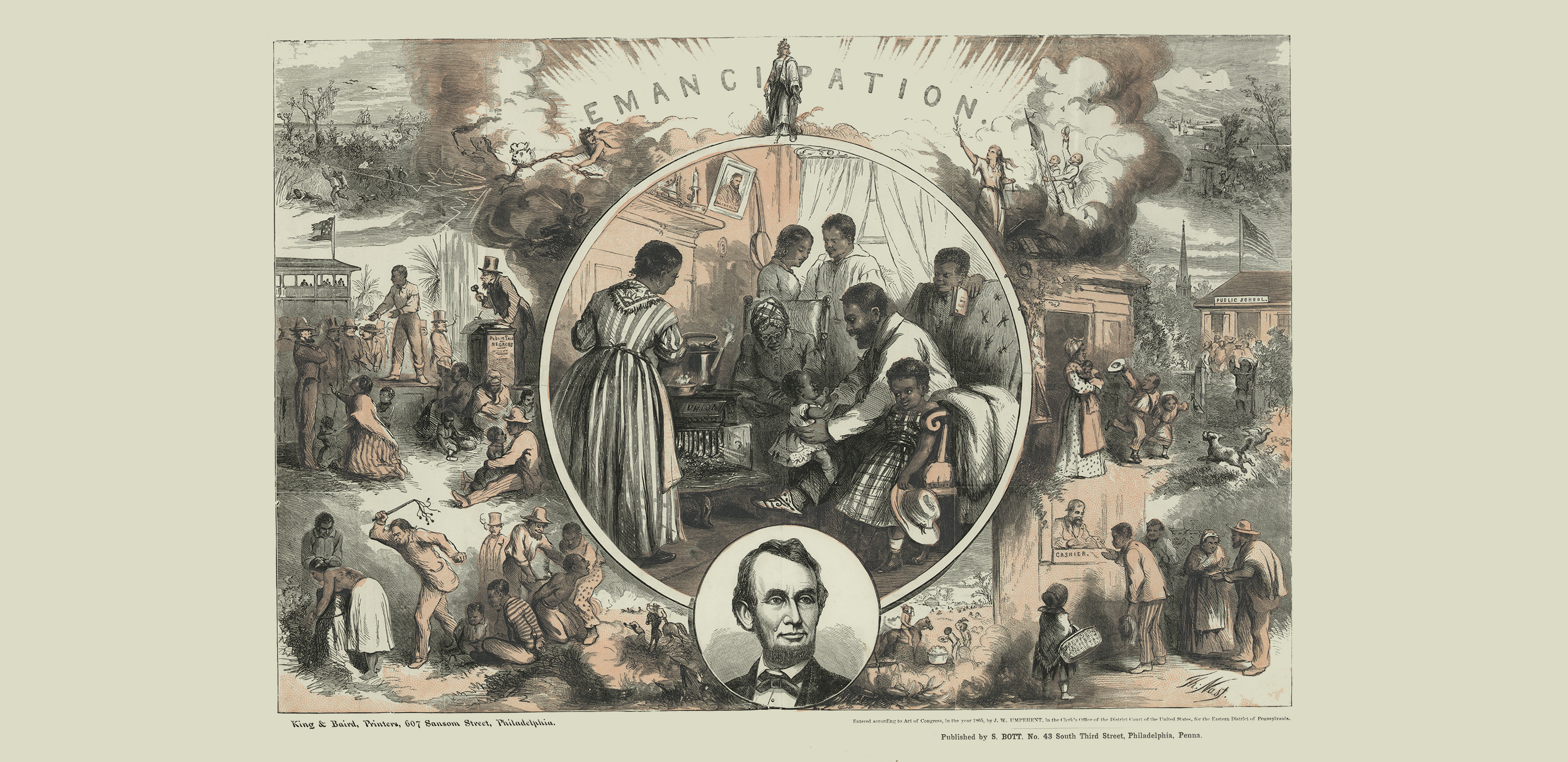
Debating Emancipation
In this Civil War-related lesson plan, students learn to annotate a historical speech to identify and articulate the author’s point of view.
Students will identify key issues involved in working through emancipation, including the consequences (pros and cons) of President Abraham Lincoln’s administration changing its position from preventing slavery in new territories/states to eradicating slavery in states in rebellion.
This lesson should precede a reading activity on the Emancipation Proclamation.
Common Core Standards
LS 1.A: Key Ideas and Details
Determine the central ideas or information of a primary or secondary source; provide an accurate summary of the source distinct from prior knowledge or opinions.
LS A.1: Text Types and Purposes
Write arguments focused on discipline-specific content. a. Introduce claim(s) about a topic or issue, acknowledge and distinguish the claim(s) from alternate or opposing claims, and organize the reasons and evidence logically. b. Support claim(s) with logical reasoning and relevant, accurate data and evidence that demonstrate an understanding of the topic or text, using credible sources. c. Use words, phrases, and clauses to create cohesion and clarify the relationships among claim(s), counterclaims, reasons, and evidence.
Literacy Skills Standard 1 & 2
The student will develop and demonstrate Common Core Social Studies reading literacy skills.
| Learning Objectives: | Students will identify key issues involved in working through emancipation, including the consequences (pros and cons) of the Lincoln administration changing its position from preventing slavery in new territories/states to eradicating slavery in states in rebellion. Students will identify key figures (in addition to Lincoln) involved in the process of emancipating slaves and how emancipation would affect different areas of the government (military, financial, international relations, etc.) |
| Guiding Questions: | How did President Lincoln and his cabinet members work through the issue of emancipation? What were their various positions and did they change their approaches to the issue of slavery? |
| Prepared by | Grade | Length |
| Suzanne Manning | Secondary | 1-2 Days |
Classroom Activities
- Lesson One: The Cabinet – A Team of Rivals
Students will be introduced to Lincoln’s Cabinet officials and assigned roles. - Lesson Two: Debating Emancipation
Students will form arguments regarding Emancipation. - Lesson Three: Emancipation Proclamation or Inauguration Affirmation
Students will decide on a stance for or against Emancipation and write an official Declaration based on their majority rule.
Lesson Activity One
The Cabinet – A Team of Rivals
- Within their groups, students are assigned Cabinet roles
- Review meaning of “emancipation” and review Lincoln’s First Inaugural Address
- Quick introduction by Instructor of Lincoln’s Cabinet officials, their roles, and influences.
- Andrew Johnson, Vice-President
- William Seward, Secretary of State
- Edwin M. Stanton, Secretary of War
- Edward Bates, Attorney General
- Montgomery Blair, Postmaster General
- Salmon P. Chase, Secretary of Treasure
- Gideon Welles, Secretary of Navy
Lesson Activity Two
Debating Emancipation
- Students read information on Internet-connected devices relating to their specific assigned Cabinet member and form arguments regarding Emancipation
- Students debate w/in their groups the issue of Emancipation based on the date, and their individual beliefs and roles at the time.
Lesson Activity Three
Emancipation Proclamation or Inauguration Affirmation
- Each group decides if they will “affirm” Lincoln’s stance in his Inaugural address that he would not attack the institution of slavery in states where it already existed; or if they will issue an “Emancipation Proclamation.” Decisions will be based on majority rule.
- Students must then write an official Declaration based on their decision, stating the path that will be taken by the Administration and the reasoning to support it. This will serve as the “Assessment” for this lesson. They should write with a unified voice, as if they were the one man, Lincoln, writing based on the decisions of the group
- The following day’s lesson will be a reading of Lincoln’s actual Emancipation Proclamation. Lesson: http://www.lincolncottage.org/wp-content/uploads/2015/10/Bradley-and-Harlan-for-web.pdf
What You Need
Materials and resources to complete this lesson. Large Post-It paper will be used for groups to write an Emancipation Proclamation or Deny Emancipation based on their decisions after debating the topic as a Cabinet.
- Lincoln’s First Inaugural Address
Provide copies of the speech. - Definition of “Emancipation” Displayed
- Devices with Internet Capacity
Provide link to President Lincoln’s Cottage’s Lincoln’s Toughest Decision: Cabinet Member Information that provides resources and information on Lincoln’s cabinet members’ beliefs, roles and positions on emancipation. - President Lincoln Cottage Lesson Guide for Emancipation Lesson
This resource is for instructors to use following the lesson.
- SOAPSTone Primary Source Analysis Tools
You can use either of the analysis tools provided. - Library of Congress Primary Source Analysis Tool
You can use either of the primary source analysis tools provided. - Debating Emancipation Rubric
